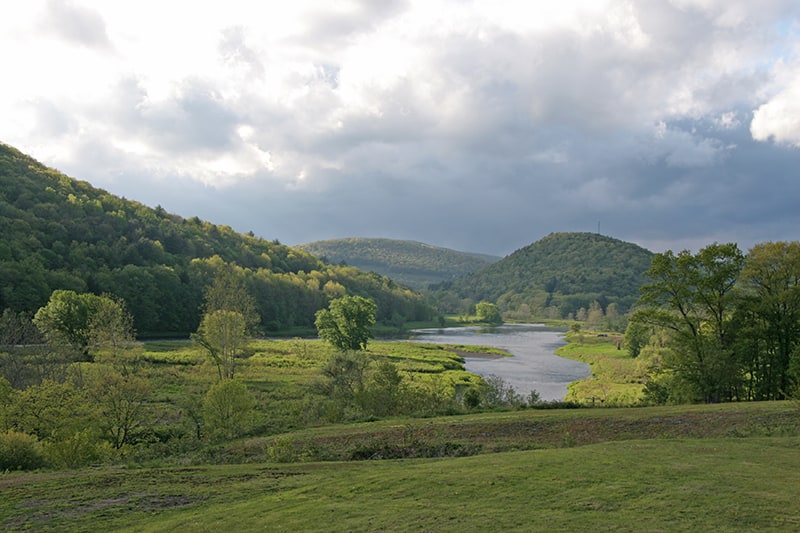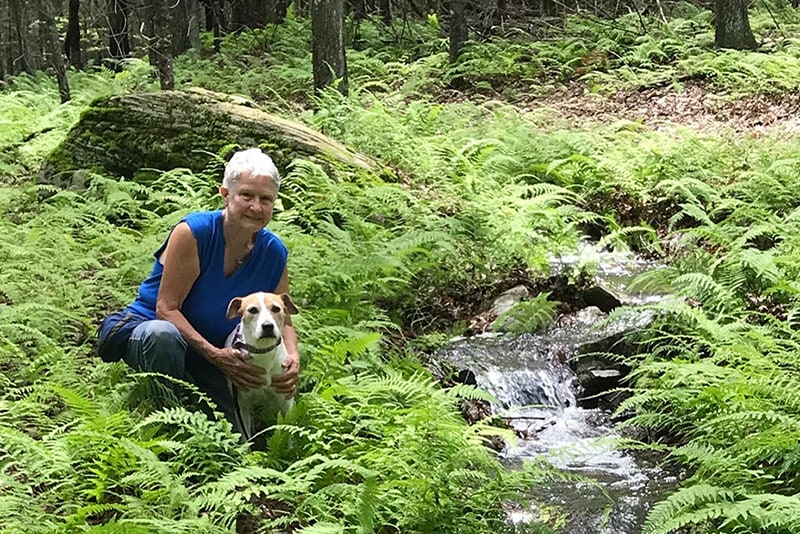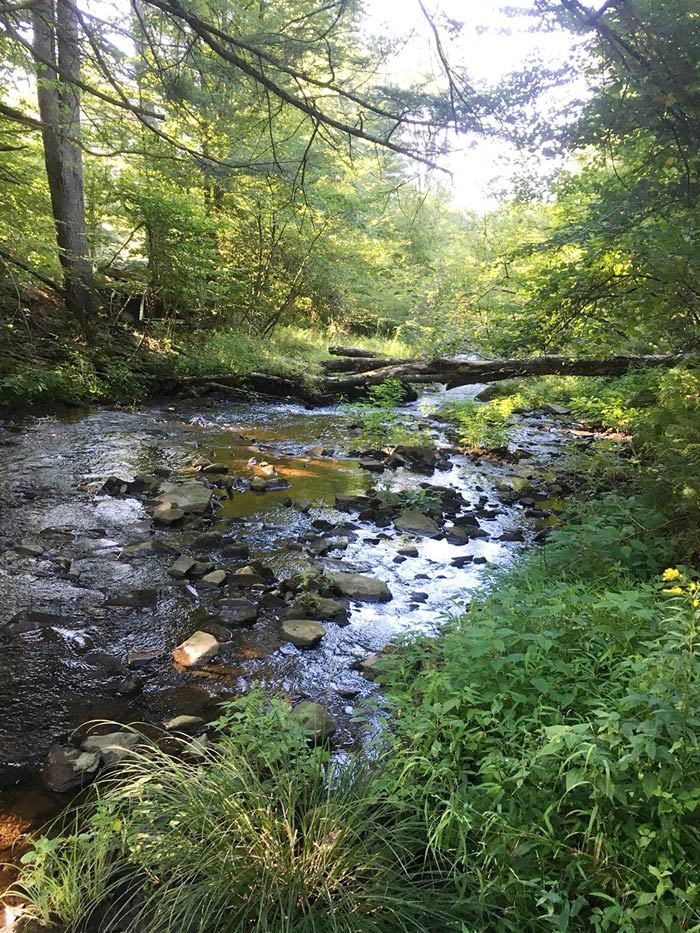Windsor Woods
April 1, 2012
About the Property
The Gas Challenge
In spring 2012, a portion of the Windsor Woods property covered by our conservation easement became subject to condemnation for construction of a natural gas gathering line and a metering station.
Bluestone Gas Corporation of New York, Inc. (“Bluestone”) submitted a plan to the NYS Public Service Commission (“PSC”) for a gathering line connection to the Millenium Pipeline that runs beneath a portion of the Windsor Woods property protected by the easement and for a metering station on the property.
Eminent domain, the legal principle by which government or a public utility can take private property, overrides any easement agreement. Once the PSC approved the application of Bluestone for a Certificate of Environmental Compatibility and Public Need, the decision of the PSC is considered conclusive of the need for condemnation—the taking of the property through eminent domain—under the law.
The Conservancy could have chosen to fight the issue of need for the pipeline connection and metering station before the PSC. The likelihood of prevailing in such a suit was extremely slim since PSC determined there was a need for the Project and the NY Department of Environmental Conservation, the NY Department of Agriculture and Markets, and the staff of the PSC had already agreed that this was the best site for the metering station. In addition, such a legal battle would have involved significant legal, engineering and other costs to challenge the proposed location and evaluate a suitable alternative.
If the Conservancy challenged the PSC and lost, which was the likely outcome, we would also lose any opportunity to negotiate with the pipeline company to find ways to best protect our easement under these negative circumstances.
The Conservancy’s Solution
The Conservancy determined that expenditures to challenge the issue of need before the PSC could not be justified, given the extremely small likelihood of success. Leveraging Bluestone’s desire to avoid extended proceedings with the PSC, the Conservancy negotiated an agreement in which Bluestone agreed to fund an escrow account for any needed mitigation, to the extent that the metering station has an adverse impact on the adjoining areas protected by the conservation easement with respect to visual and noise effects. Bluestone also agreed “they shall make no further requests for additional releases of property from the deed of conservation easement for the purpose of expansion of the metering station or any other gas transmission facilities.”
When land is taken by eminent domain, according to the law, the landowner must be compensated for the full fair market value of the property. From his portion of the condemnation payment, the landowner paid the Conservancy’s costs, including staff time and attorney fees. In addition, laws also require that when property is protected by a conservation easement, the holder of the easement is entitled to a portion of that compensation. The Conservancy’s compensation for the easement portion will go directly into our stewardship and legal defense funds to care for and protect our easements into the future.
Our Perspective
As a committed conservation organization, we are not happy with the forced impingement of the pipeline company on our easement. Natural gas extraction and infrastructure are not compatible with sustaining conservation values in our region. We are fully aware that the construction of gathering lines and a metering station make our stewardship efforts for this property much more difficult.
We continue to work as an organization to educate the public with regard to the importance of protecting our lands and waters and supporting sources of energy and locally sustainable economies that do not compromise our environmental health. And we continue to work successfully with private landowners to protect lands with conservation easements.
Easements assure that protected lands will remain so now and for future generations. Unfortunately, utility exercise of eminent domain power trumps easement protections. Given the circumstances, we worked diligently to assure that the Conservancy could at least mitigate the impacts of the condemnation with reimbursed costs for our efforts to deal with this issue and funds for future stewardship and protection.
For further details or information, please contact the Conservancy »






